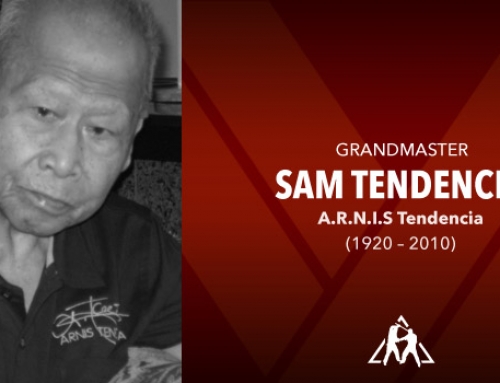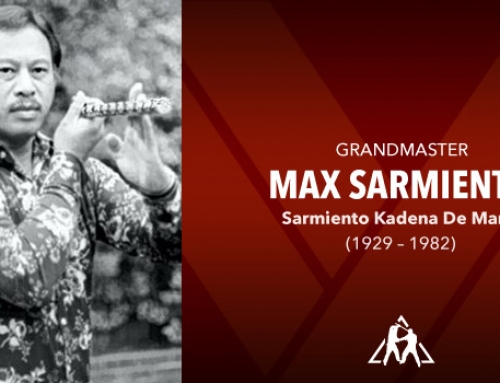Today as in the past, whether learning the original form known as Kali or the later renamed form known as Arnis. The Filipino art of stick fighting is a unique art of graceful movements. Which combine balance, timing, and coordination to formulate a fighting art that can hold any individual in complete awe and wonder.
Today, throughout the Philippines there are many factions or styles in the Filipino fighting arts known as Kali, Eskrima, and Arnis. Each have their own philosophies and roots in Filipino history whether handed down a from generation to generation.
Or a combination of philosophies and techniques that an individual has dissected, combined, and then added their own thoughts and beliefs. Then have tested and proven their skill, then proclaimed themselves as Dalubhasa (master) or Pundador (founder) of that art.
However each style, though the philosophies may vary and be unique in their own right, the raw basics of stances, blocking, and striking are very similar. This showing the very roots of a fighting art that has passed the history of time and we recognize today as part of a country’s culture and heritage.
Practiced in the Aguillon family since the domination of the Philippines by the Spanish. Which is still unknown to most, unless they are from the province of Zambales on the island of Luzon in the Philippines. A style of arnis de mano passed down from generation to generation, concepts added by each generation to improve the style.
Pundador Manuel M. AguillonBorn June 19, 1915 in San Antonio, Zambales on the island of Luzon in the Philippines, Manuel Aguillon commenced his training in the fighting arts as a young boy. As a teenager he also found that he had a great desire to use his hands with or without the cane, he turned to boxing.
 He found that boxing was demanding in using the flowing movements of the body coupled with foot and hand coordination. With his desire of Arnis and boxing he combined the body movements. Going to Manila and various other cities throughout the Philippines his skills as a boxer grew and soon he became known as ‘Kid Balite.’ Winning many bouts and building his career as a boxer he became a champion in 1938.
He found that boxing was demanding in using the flowing movements of the body coupled with foot and hand coordination. With his desire of Arnis and boxing he combined the body movements. Going to Manila and various other cities throughout the Philippines his skills as a boxer grew and soon he became known as ‘Kid Balite.’ Winning many bouts and building his career as a boxer he became a champion in 1938.
However, this was to only last a few years with the occupation of the Philippines by the Japanese. Joining the guerrilla movement, his unit operated out of the hills and jungles of Zambales Province.
Becoming a Sergeant in his unit, he believed that his men should know how to defend them selves with or without a weapon and so each trained to become an expert in the art of hand-to-hand combat. It was during this time that Manuel Aguillon also trained with other experts in Filipino stick fighting and added to his own knowledge.
Upon liberation of the Philippines, Manuel Aguillon traveled to Guam to work in the shipyard and also continued his boxing career. Returning to the Philippines he entered the field of law enforcement in San Antonio, Zambales.
During this time he gained much respect and it came as a usual routine that if a problem arose people would request his assistance in solving the confrontation, this was even if other officers were present.
This was a continuing routine whether he was on duty or off. Known for his tactical abilities, people were amazed that he could handle a situation with his dynamic persuasive personality. In the six years that he was in law enforcement he was never known to use his firearm.
With his experience in law enforcement and his reputation in handling situations Manuel became a government official as Barrio Captain of San Nicholas, Zambales, which was a post that one had to elected. He served two terms in this position.
Retiring as a Baranggay Official his passion for arnis and boxing continued for he was constantly teaching and promoting both arts. Sponsoring boxing matches at events from Olangapo to the very northern parts of Zambales.
Even though teaching was his passion, money was needed to support his family so he then went to work at the San Maguel Naval Communication Station, in San Antonio, Zambales working at the base gymnasium.
Even on the Naval base Pundador Aguillon became known for his knowledge in arnis and boxing, and people would seek him out constantly for instruction. Working during the day, at night his students would come to his home for training.
To be a true student of Pundador Aguillon learning his family art was an opportunity that only few would get for his standards of trust, conduct, personality, and morality were key factors which would permit one to become a personal student of his.
 As he would instruct, he would learn your weaknesses and strengths. This was to better instruct the student, building his weaknesses into an equal relationship with ones strengths.
As he would instruct, he would learn your weaknesses and strengths. This was to better instruct the student, building his weaknesses into an equal relationship with ones strengths.
Pundador was always willing to teach to teach a student that was willing to want the knowledge that was being offered, however when sensing that the student was not learning for the betterment of themselves, he would confront the student with his thoughts and if this was the case the student was dismissed.
Pundador believed he had the knowledge he was willing to pass on, but only to those who wished to benefit in a betterment of themselves, of their inner being and spirit.
A student that later became a celebrity in Hong Kong and throughout the Philippines in the movies and used the philosophies, and taught what he learned from Pundador Aguillon and later established his own organization was Grandmaster Trovador Ramos of TRACMA [Trovador Ramos Consolidated Martial Arts – of Combat Judo and Karate].
Grandmaster Ramos always has shown the highest respect to Pundador for sharing his knowledge with him.
Pundador constantly throughout his life reached out for more knowledge, either from other Arnisadors, Grandmasters, and Masters of other fighting arts and even books when available. Constantly practicing and combining his family’s stick fight art any fighting art that would blend in with his philosophies.
Manuel found that the graceful movements of other martial arts such Judo, Ju Jitsu, Karate, Kung Fu and coupled with the swift hand and foot fighting techniques of boxing, made a distinct and characteristic form of Arnis into a Scientific Filipino Martial Art.
As the years passed Manuel Aguillon became set and guarded in his families art. Being selective and discreet in choosing students, he would only teach those who he found had high morale standards.
So upon his passing away on January 8, 1991, only a hand full of students is known to exist that has the knowledge of Aguillon Arnis.
Passing away in 1991 Grandmaster Manuel Molina Aguillon Sr. his qualified instructors in the Philippines taught as he did in an informal atmosphere, taking few students and maintaining the high standards which Pundador promulgated and believed in.
Pundador wife Consolacion Mata Aguillon passed away in 1995. They have left behind their four daughters and one son. Named by his surviving family members as the most senior student and Executor of the Arnis Balite system Punong Guro Steven K. Dowd has been appointed by the family to carry on their father’s art and philosophies.
Punong Guro Dowd returned to the Philippines in 2004 for a visit with the Aguillon family and has learned that the other instructors that were personally taught by their father have passed away during the years. And he is the only original student left that was taught by their father Pundador Manuel Aguillon.






















Leave A Comment
You must be logged in to post a comment.